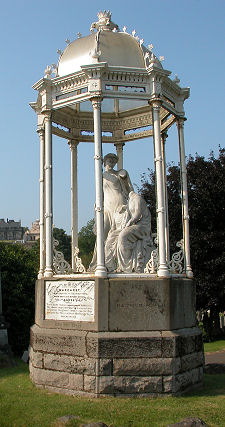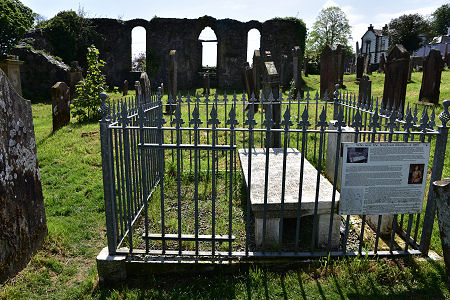 The Martyrs' Graves |
The second half of the 1600s were deeply troubled times in Scotland (see our Historical Timeline). The restoration to the throne of Charles II in 1660 was followed by an upsurge in protest in Scotland by "Covenanters", staunch Presbyterians who opposed what they saw as the King's moves to bring back Catholicism to Scotland by the imposition of rule by bishops. The Covenant had been signed in 1638 by Presbyterians dismayed at the pursuit of similar policies by Charles I and led directly to the (wrongly named) English Civil War, the execution of Charles I, and the reign of Oliver Cromwell.
The religious strife of the 1670s and 1680s did not quite lead to full scale civil war despite battles in June 1679 at Drumclog and Bothwell Brig. Instead it might be described as a sporadic war of insurgency, with clandestine gatherings of Covenanters being hunted down by government forces. The conflict flared up after the assassination by the Covenanters of Archbishop James Sharp, Primate of Scotland, in May 1679, which resulted in ruthless suppression throughout Scotland of Covenanters wherever they could be found.
The Government's main weapon became the "Abjuration Oath" which renounced the Covenant and which, from December 1684, all Scots were required to swear on pain of death. Many refused to do so and the result, in what became known as the "Killing Time", was the judicial murder of many Scots who went on to become remembered as Covenanter Martyrs. (Continues below image...)
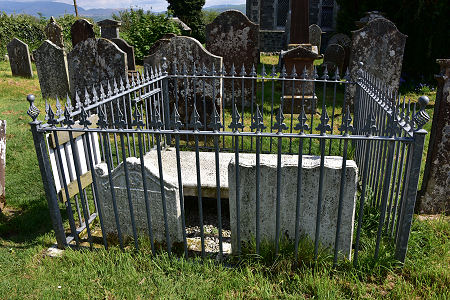 Another View of the Martyrs' Graves |
South-west Scotland was a particular focal point for Covenanters and for their suppression, and there are three memorials in and around Wigtown to a group of people who have become known as the Wigtown Martyrs as a result of their execution as Covenanters on 11 May 1685. The group comprised William Johnston, John Milroy and George Walker, who were hanged for their beliefs, and two women, the elderly Margaret McLachlan, and the teenage Margaret Wilson, who were drowned for theirs.
The largest of the monuments to the Wigtown Martyrs stands on Windy Hill, on the western edge of Wigtown where it commands wide views over much of Galloway. The remaining two monuments are rather less obvious and in many ways much more poignant. On the eastern edge of the town stand the remains of Wigtown's Old Kirk, next door to its more recent replacement. In the kirkyard behind the ruins of the Old Kirk is a railed enclosure in which you find the graves of the five who died that day. The gravestones, like the stones commemorating other martyred Covenanters you stumble across in graveyards across southern Scotland, carry detailed inscriptions that amount to cries of outrage and have lost none of their force over the intervening centuries.
One of the gravestones, commemorating the three hanged men, is at pains to record that they were killed on the orders of a Major Winram. Margaret McLachlan's gravestone gives a list of those later held responsible for her death. But it is the largest of the gravestones, commemorating Margaret Wilson, that sets out in greatest detail how she was executed.
And it is the manner of the execution of Margaret McLachlan and Margaret Wilson that helps ensure they will remain among the most famous of the martyred Covenanters. In an effort to force them to sign the Abjuration Oath they were tied to stakes set in Wigtown Bay at low tide, and they were slowly submerged by the incoming tide, all the while refusing to recant their faith. Today the last of the three martyr's monuments in and around Wigtown commemorates this event: the Martyr's Stake on the edge of Wigtown Bay. Margaret Wilson is also remembered in the form of a monument in the graveyard of the Church of the Holy Rude in Stirling.
 Martyr's Stake |

|
|
|
Visitor InformationView Location on MapStake: NX 473 556 What3Words Location: ///shutting.suppose.adjuster Graves: NX 435 555 What3Words Location: ///remit.banter.ratty Monument: NX 430 554 What3Words Location: ///encoder.rhino.offhand |
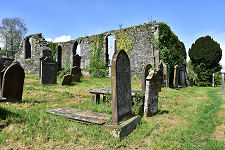 Wigtown Old Kirk |
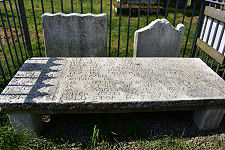 Martyrs' Graves |
 An Older Photo |
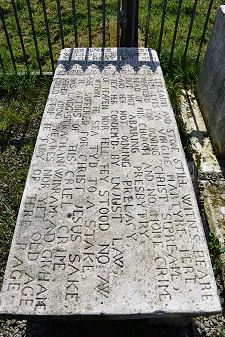 Gravestone |
 An Older Photo |




